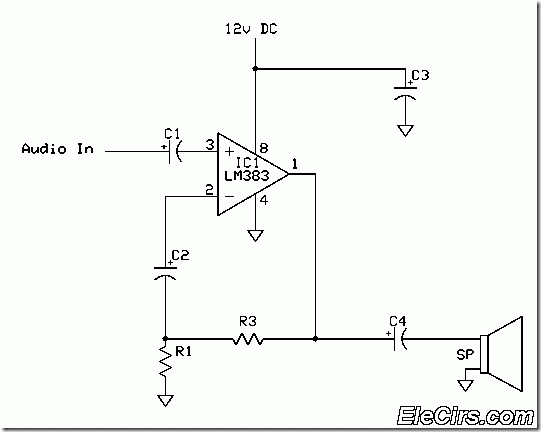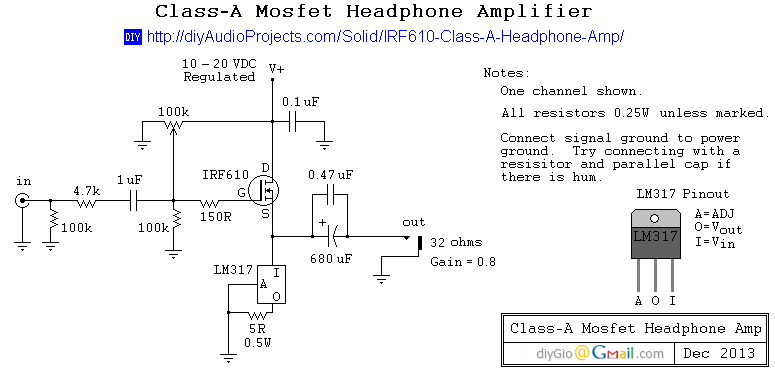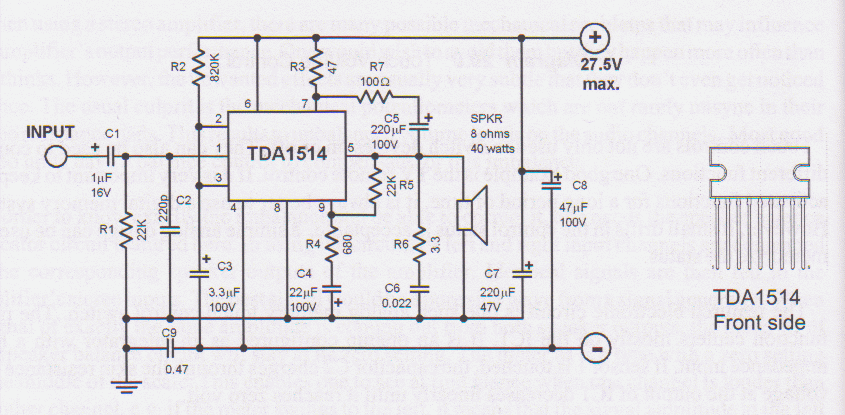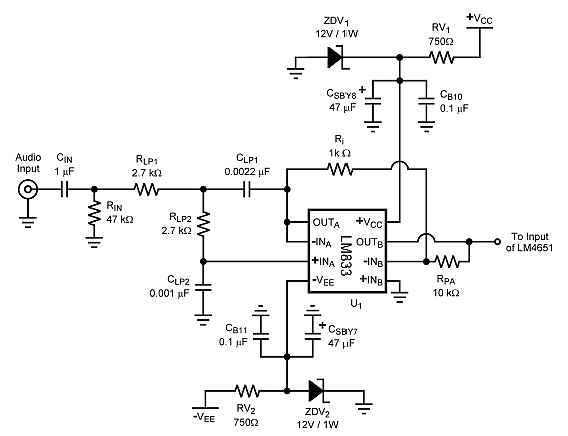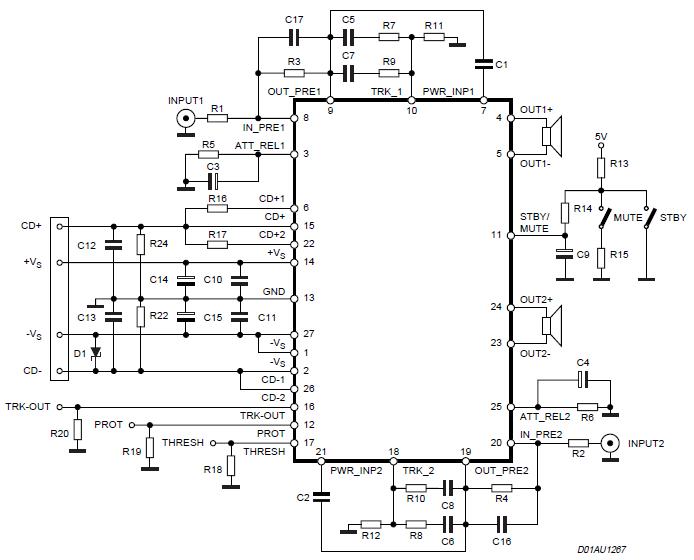
Notch filter uses an operational amplifier

This notch filter is beneficial for tunable band-reject applications in the audio range. The specified values will provide a tuning range of approximately 300 to 1500 Hz.
The notch filter is designed to attenuate a specific frequency while allowing others to pass through. In audio applications, this is particularly useful for eliminating unwanted frequencies, such as hum or noise, without affecting the overall audio quality. The filter's design typically employs a combination of resistors, capacitors, and operational amplifiers to achieve the desired frequency response.
To achieve the specified tuning range of 300 to 1500 Hz, the filter's components must be carefully selected. The central frequency of the notch can be adjusted by varying the resistance and capacitance in the circuit. This can be accomplished through the use of variable resistors (potentiometers) or by utilizing capacitors with different values. The frequency response can be analyzed using a Bode plot to ensure that the filter effectively attenuates the target frequency while maintaining a flat response in the passband.
In practical applications, the notch filter can be implemented in various configurations, including passive and active designs. Passive notch filters typically consist of passive components and are simpler but may have limitations in terms of gain and bandwidth. Active notch filters, on the other hand, use operational amplifiers to provide gain and can offer better performance in terms of selectivity and stability.
Overall, the design and implementation of a notch filter for tunable band-reject applications require careful consideration of component values and circuit topology to ensure optimal performance in the specified audio frequency range.This notch filter is useful for tunable band-reject applications in the audio range. The values shown will give a tuning range of about 300-1500 Hz. 🔗 External reference
The notch filter is designed to attenuate a specific frequency while allowing others to pass through. In audio applications, this is particularly useful for eliminating unwanted frequencies, such as hum or noise, without affecting the overall audio quality. The filter's design typically employs a combination of resistors, capacitors, and operational amplifiers to achieve the desired frequency response.
To achieve the specified tuning range of 300 to 1500 Hz, the filter's components must be carefully selected. The central frequency of the notch can be adjusted by varying the resistance and capacitance in the circuit. This can be accomplished through the use of variable resistors (potentiometers) or by utilizing capacitors with different values. The frequency response can be analyzed using a Bode plot to ensure that the filter effectively attenuates the target frequency while maintaining a flat response in the passband.
In practical applications, the notch filter can be implemented in various configurations, including passive and active designs. Passive notch filters typically consist of passive components and are simpler but may have limitations in terms of gain and bandwidth. Active notch filters, on the other hand, use operational amplifiers to provide gain and can offer better performance in terms of selectivity and stability.
Overall, the design and implementation of a notch filter for tunable band-reject applications require careful consideration of component values and circuit topology to ensure optimal performance in the specified audio frequency range.This notch filter is useful for tunable band-reject applications in the audio range. The values shown will give a tuning range of about 300-1500 Hz. 🔗 External reference

